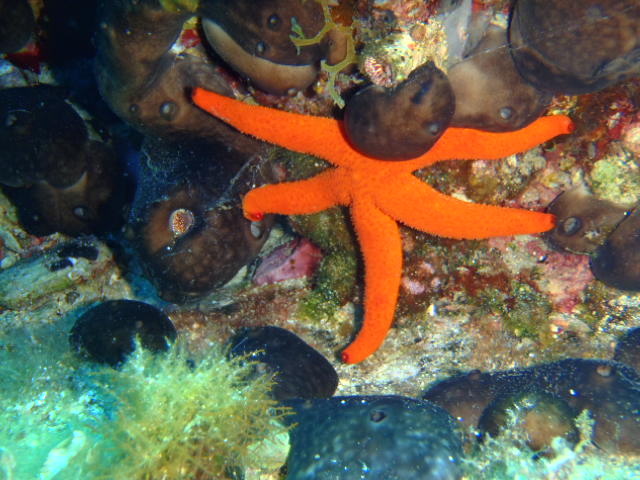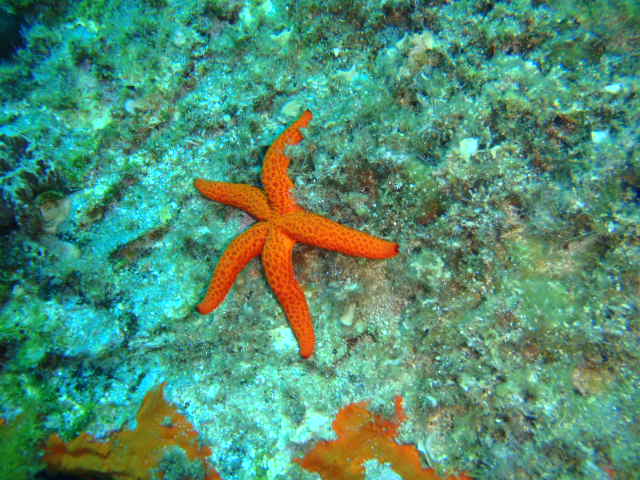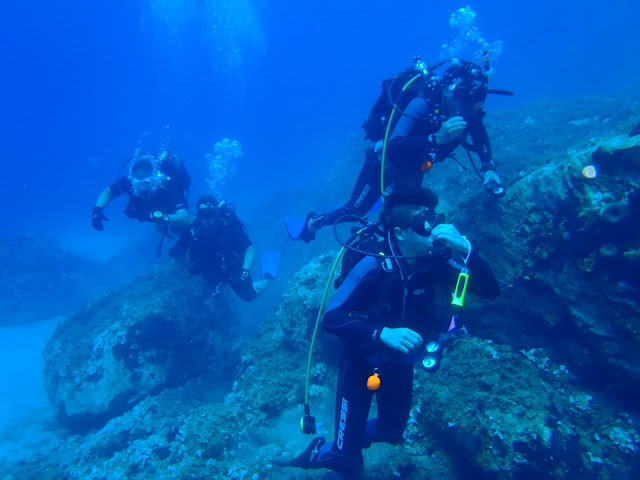August 4th to 12th 2012
Samos, one of Greece's Asiatic islands - the closest one to Asia Minor. Its a unique part of a European country - but its not European in its nature (Anatolian flora, chameleons, jackals, Cypress forests, fascinating insects, Ruddy Shelducks...). The place is not really an island- almost. Its like a peninsula, a unique strait 1.5 Km wide separates Samos from Turkey's Mykali Peninsula - or Dilek Mili Park (...known until recently as one of the last haunts of the Anatolian Leopard in Turkey). Last time I was on Samos I was enchanted, that was back in the summer of 1995. Also in 2000 I worked on the Special Environmental Study to create a sort of a National Park in the NW part of the Island...not a success story. Its interesting for me to discuss some of the changes, the general feel this year.
In 1995 I were amazed that a place like this still existed. Especially, wilderness mount Kerkis, the Seitania beaches in the Northwest coast. Also the inland waters - summer flowing streams on Karvouni near Mytilinaioi village and the wetlands at Alyki on the Mykali Straits, and around Pythagorio. It looked and felt fantastic - a naturalist's dream. Also a place with great incentive to save nature in the name of ecotourism.
In many ways the island is still exceptional for biodiversity in Greece. And there is still plenty of potential there. However, many things did not go very well. These are some of my initial unstructured thoughts about the conservation situation on the island:
- Nowhere, except on the most sophisticated of tourist maps did I see any mention of the Natura 2000 network of proposed protected areas - within such fantastic sites such as the Alyki lagoon and its adjacent beaches nothing remotely gave an impression that this place is special or protected.
- Many "volunteer" fire fighting facilities exist after the great fires of 2000 - and much of this is heavily advertised and rather funny (how ridiculous to spend so much money on buying trucks and building outlooks when there is no real planning or appreciation for "managing fire").
- Concerning Kerkis and the Seitania Beaches: The road from Drakei to Karlovassi was the reason the "National Park" idea was stalled to a halt in early 2000 and it was finally never constructed - and no mention of "Park" exists anywhere anymore.
- There is no ecotourism scheme for Samos - it was just a "trip" we were on in the '90s. It has blown over. I say this since, development of small holiday homes, apartments for tourists etc etc is rampart in many coastal areas and the landscape is becoming uglier with little "control". See Potami beach, Marathokampos Beaches, Alyki and Mykali and Psilli Ammos coastlines - they are much more uglier today - and geared for low-grade mass tourism. It was better in the mid '90s.
- The nicest environments on Samos for us were the following: some of the inland villages; parts of the town of Karlovassi (which has also become a student town); Samos Town from-a-far (reminiscent of Smyrna...); the Straits of Mykali, and the Kerkis Massif and its NW beaches ofcourse.
We saw very little wildlife - it was windy and quite hot most days. There is a lot of nature but you don't easily see it in summer: small groups of Eleanoras Falcons at Pyrgos village; A Beech Marten popped up next to the road on a night drive; locals talked of Monk Seal on the South coast; many streams were bone-dry; and it was obviously not flowery.
I would never visit Samos in mid-summer as a holiday destination or even an ecotourism base in summer. However, it was beautiful and rather quiet.... this summer its not the large number of "mass tourists" that bothered me - some say numbers are down by 60% this year.... It is just the typical mess of a coastal Aegean "tourist island" and the bitterness I feel when I think that it could be "much much better" here.
Some coarse suggestions:
- The local community should invest strategically in the Protected Areas. Add more small ones and some marine ones also. Create are real plan for protected areas on the island (then update it- there is very little base-line information on this).
- Create an International Park at the Mykali Straits -Dilek Mili Park. Here's an action that may bring Greece and Turkey closer together and lend an international distinction to Samos (but don't forget that the reason is saving nature - not just attracting investors).
- Create a scheme to stop or control scattered tourist-centered building in and nearby protected areas (this is especially serious at Mykali straits (in the SE coast, but elsewhere on the coast too).
- Manage wildfire - incorporate this into the strategic planning for protected areas.
- Save the Seitania Beaches, the Kerkis coast and the trails. No more roading!! This place is pure coastal cultural landscape and wilderness - it is a BIG asset and one of the most spectacular topographies in the Aegean Islands. Its a real shame to see it being hacked up by roads, stupid dirt tracks, tourist chalets, cafes, holiday homes on the beach (what a shame...).
- Control wind farms. They are plain ugly and degrad landscape quality. Although few exist on the island - the island and many offshore ones further south are immanently threatened. Whatever the case, keep them off the mountain summits and the island's most pristine wilderness and top-scenic areas. What is a top-scenic area?? (that would be a typical technocrat's question...).
- Explore opportunities of Marine Protected Areas (the seas are cold and rich here - and the situation on the Greek-Turkish border does create an opportunity, maybe....
- Promote ecotourism more. Create an ecotourism scheme- and certification and award do-gooders in this field. Samos is a prime area for ecotourism still - that's why I feel so much bitterness.
- Study nature on Samos more. We know very little still - for example the sea-life on the island is really fascinating for me (e.g. the current swept Mykali straits; the presence of pelagic sharks on the west coast; the need for Marine Protected Areas). Naturalists should visit....
I'll try to visit Samos again.
Some pics will soon follow........


















































